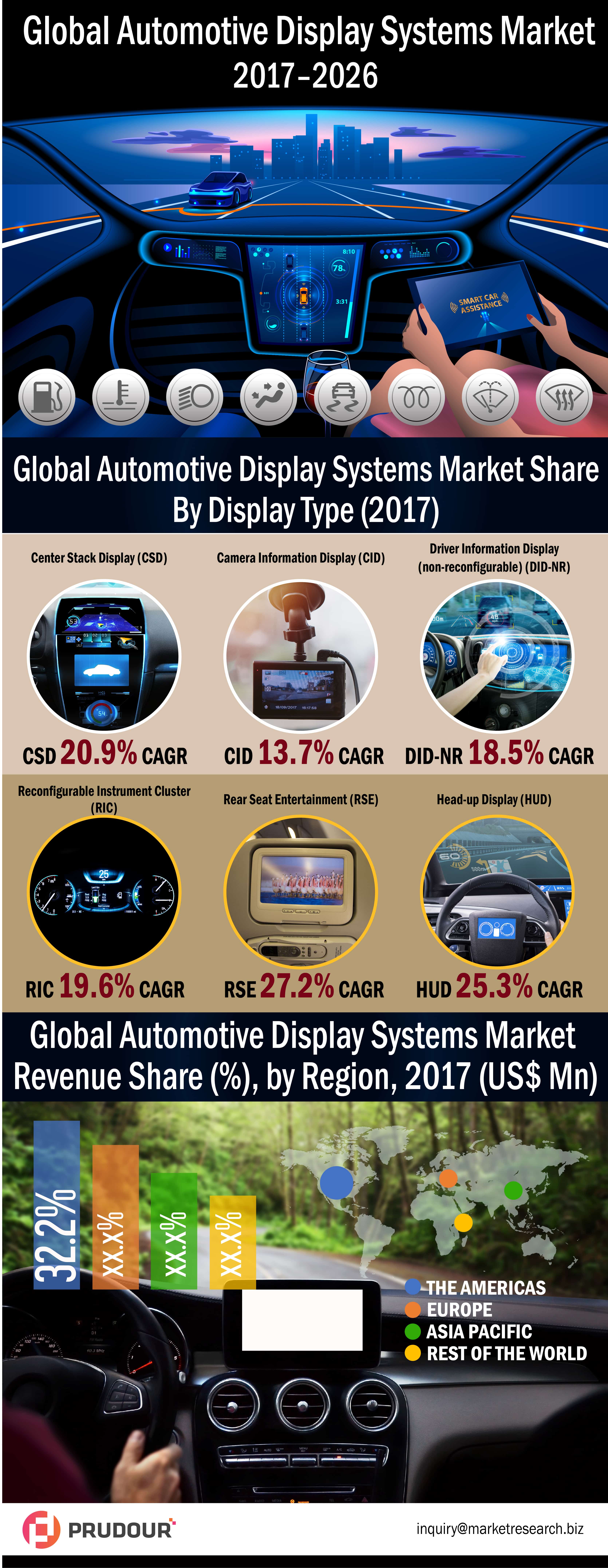
The global automotive display system market was valued at US$ 11,815.7 Mn in 2016 and is projected to reach US$ 70,771.0 Mn in 2026 at a CAGR of 19.8% between 2017 and 2026. The CSD segment in the global automotive display system market accounts for a major revenue share of 36.0%. owing to factors such as easy accessibility and entertainment features, and it is expected to maintain its dominance over the forecast period.
The automotive display system is transparent display used in automobiles and displays data to indicate or alert the driver regarding any obstacles or dangers on the road in order to enable a smooth and safe driving experience. Various types of automotive display systems include center stack display, camera information display, DID-NR, reconfigurable instrument cluster, rear seat entertainment, and head-up display. Technological advancement with increasing use of smart devices has led to growth in the global automotive display system market. Major factors fueling the growth of the global automotive display system market include declining costs of thin-film-transistor/liquid-crystal display (TFT/LCD), rising demand for devices and solutions to ensure driver and passenger safety, especially during long or arduous drives. Others include increasing demand for mid-segment cars in emerging economies. Factors hampering growth include the possibility of system failure due to software malfunctions, resulting in accidents, besides connectivity glitches.
Companies profiled in the report are Alpine Electronics, Continental, Delphi Automotive, DENSO, Fujitsu, Garmin, KYOCERA Display, LG Display, Nippon Seiki, Panasonic, Pioneer, Robert Bosch GmbH, Valeo, Visteon, Yazaki.
